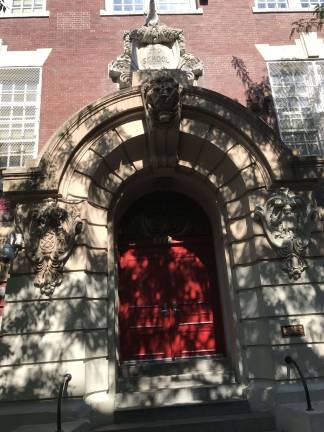reaching for the roof


If there is one cardinal rule of municipal construction in New York, it boils down to this: Project costs inevitably go up.
Which makes it all the more extraordinary now that the price for a massive retrofit of a public school has gone so dramatically down.
The tab for creating a new rooftop play space atop P.S. 290 on East 82nd Street plummeted last month by some $4 million or more.
Suddenly, an ambitious if long-stalled plan to carve out a classroom-and-recreation area — above the treetops, graced with green, safe and secure, designed to literally get students off the street — was back on track.
“This is absolutely fantastic news!” said Tom Wrocklage, an executive board member of the school’s PTA, which has campaigned for the rooftop conversion for the past four years.
“Right now, our kids have to play on the street, and they’re at great risk from bicycles, e-scooters, cars coming out of nowhere — unfortunately, even gun violence is something we have to worry about,” he added. “If they’re up on the roof, they’ll finally have security ... But we’re not going to celebrate until the ribbon is cut.”
The cautionary note is understandable: No budget for the project has been publicly released. Millions of dollars must still be secured. No final blueprints have been drawn up. Engineering work lies ahead. A timeline hasn’t been established. The city procurement process can be painfully slow.
But supporters say a corner has been turned in efforts to fund a rooftop play space at the five-story, red-brick schoolhouse, which was built in the Beaux-Arts style in 1903 — and has seen no substantive changes to its physical plant in 115 years.
Located between Second and Third Avenues on the Upper East Side, P.S. 290, which instructs kids from pre-K through the fifth grade, is one of only eight public schools in Manhattan — out of a borough-wide total of 505 — that offer no designated areas for physical education.
While 497 schools house gymnasiums or provide space for city-mandated phys-ed programs in their buildings or off-campus, P.S. 290 has no stand-alone gym or adequate courtyard space for recess, lacks a “gymnatorium,” or converted auditorium, and has no indoor play space nearby.
That makes the facility, re-launched in 1991 as the Manhattan New School, a throwback to a century-ago era when physical education was not an imperative, virtually no public schools boasted gyms — and the sole form of instructional exercise was dubbed “recess-on-the-street.”
Those time-capsule conditions — totally out of whack with today’s risk-and-safety standards — were the subject of a Page One story in Our Town (“The School That Time Forgot,” Oct. 4-10) that documented how 600-plus elementary students had no choice but to use a so-called “play street” in front of the school for recess, exercise needs and other physical activities.
Seeking to get the kids off the street, out of harm’s way and up into protected outdoor play space on the roof, advocates raised a small fortune:
East Side City Council Member Ben Kallos allocated $1.52 million in three separate funding tranches over three years. East Side state Assembly Member Rebecca Seawright raised $500,000 from a state facilities funding program. The PTA ponied up $250,000 from movie nights, bake sales and Halloween dances.
With $2.27 million in the bank, and community support locked up, the rooftop-retrofit project was within striking distance of an initial $2.8 million estimate. Then, costs began to go, well, through the roof, doubling, trebling, almost quadrupling by some accounts. No firm budget was unveiled, but estimates ranged from $7 million to $10 million.
What happened? The old school has no elevators. To make it ADA accessible, a lift from street level to the roof would have to be built, necessitating major interior construction and additional costs north of $4 million.
“The mayor’s office has rightly started to take a more aggressive stance that as we do construction work, we build a more accessible city for the future,” Kallos said. He cited several East Side schools that now lack accessibility.
Still, he said, school administrators were troubled about the loss of instructional space that would result from elevator installation — four classrooms, about one-eighth of available space — and believed that left them no viable option but to seek an ADA waiver.
So the city’s School Construction Authority (SCA), which Kallos praised for responding to community needs, applied to the Mayor’s Office for People with Disabilities (MOPD) for a waiver. Initially, it was nixed, he said.
“But thanks to reporting by Our Town, the waiver request received additional attention and was examined a second time, and now, the waiver will allow the project to move forward,” Kallos added.
The city’s Dept. of Education on Nov. 26 confirmed that SCA, which builds and renovates schools, received a waiver from MOPD. That brought the price tag down roughly $4 million, other sources estimate.
Both Kallos and Seawright pledged to seek additional funding to bring the project to fruition.
“This is not just about providing a safe play space,” Seawright said. “This is about meeting the essential developmental needs of our children. Nothing must stand in the way of their well-being and growth.”
invreporter@strausnews.com